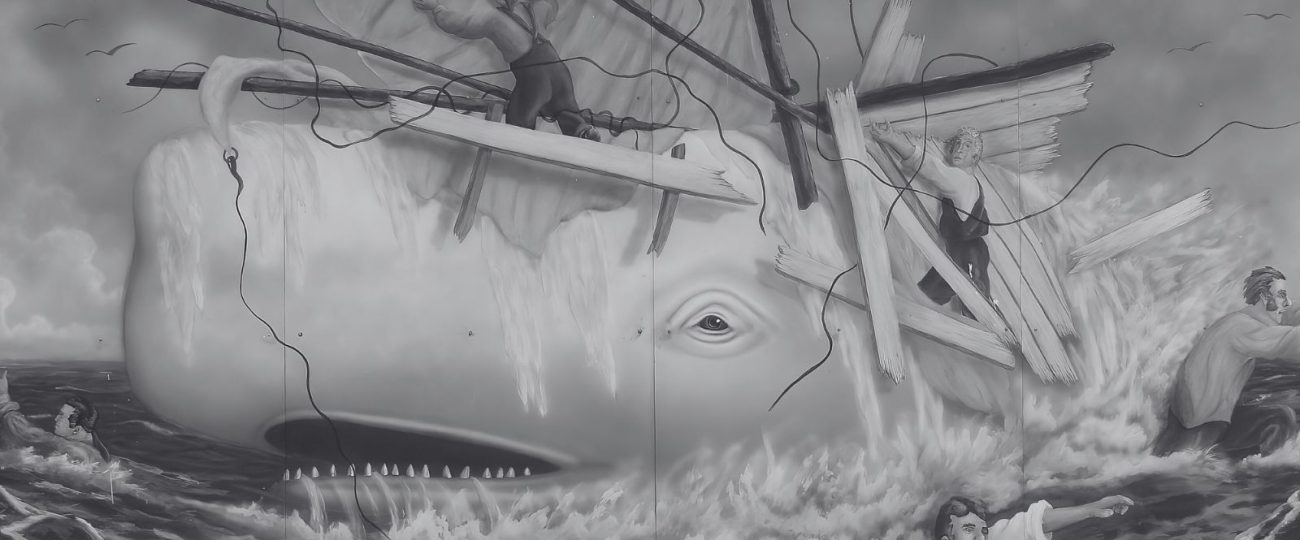What Happened On November 14th?
On November 14, 1851, Herman Melville published Moby-Dick in the United States. This edition presented Melville’s complete vision, including an “Epilogue” that revealed Ishmael as the sole survivor—a detail missing in the earlier British edition. In a time when novels adhered to straightforward plots, Moby-Dick introduced readers to an ambitious blend of adventure and philosophical exploration. Its complex symbolism and unconventional narrative structure confounded critics and left many readers unsatisfied, more accustomed to typical sea tales. Melville had created Moby-Dick to examine obsession, fate, and humanity’s struggle with nature, but the novel initially failed to connect with the public.
Sales of Moby-Dick lagged, and the book did not reach the popularity of Melville’s earlier works. Critics found its symbolic content and extensive digressions tedious, and only a few hundred copies sold in the first weeks. However, Melville saw this publication as his most ambitious achievement, even as readers overlooked it. Although it received little immediate recognition, he defended Moby-Dick in correspondence, calling it “a new phase in [his] literary life.” He considered it a personal triumph and continued hoping it would one day find its audience.
Melville’s journey to this point had been shaped by hardship, adventure, and an intense pursuit of knowledge. Born in 1819, he grew up in a family once accustomed to a life among New York’s upper class. His father, Allan Melvill (the family later added an “e”), worked as an importer of French goods, which allowed the family comfort for some years. However, a series of poor financial choices ultimately led to bankruptcy. When Melville was 12, his father died suddenly, leaving his widow and eight children with heavy debt. Melville left school to help support his family, taking jobs as a clerk, teacher, and farmhand. Although his formal education ended early, he sought knowledge wherever he could, developing a passion for literature, philosophy, and history.
At 20, Melville went to sea, driven by financial need and a desire for adventure. In 1841, he signed aboard the whaling ship Acushnet and set out on a journey that would profoundly change his life. He endured the harsh and isolated existence of a whaler for two years, then deserted the Acushnet in the Marquesas Islands. There, he lived briefly among the Typee, a Polynesian tribe with a reputation for ferocity. This experience inspired Typee, his first book, which captivated American and British readers with its exotic portrayal of island life, though some questioned its authenticity. Later, Melville admitted to embellishing parts of the story, which both boosted Typee’s popularity and added a layer of controversy.
As his fame grew, Melville entered New England’s literary circles, where he formed a close friendship with Nathaniel Hawthorne. Hawthorne’s introspective and darker style led Melville to explore deeper themes in his own writing, a shift that became evident in Moby-Dick. In the novel, Captain Ahab’s obsessive pursuit of the white whale transforms into a psychological and existential struggle, a complexity rarely seen in the literature of the time. Inspired by Hawthorne, Melville probed ideas of fate, ambition, and humanity’s place in an indifferent universe.
Melville based much of Moby-Dick on his experiences aboard the Acushnet and his study of maritime life, bringing vivid realism to the story. He infused the novel with knowledge of whaling practices, navigation, and maritime customs, creating scenes so accurate that whalers praised his authenticity. The character of the whale drew inspiration from Mocha Dick, a famous albino sperm whale known for attacking ships, as well as the Essex, a whaling ship that a whale rammed and destroyed. These real-life influences grounded the novel’s portrayal of danger and high-seas adventure.
Though Moby-Dick included detailed sections on whale biology, navigation, and whaling tools, readers often found these descriptions overwhelming. Fascinated by whales’ behavior and anatomy, Melville had consulted works like Thomas Beale’s Natural History of the Sperm Whale. These lengthy passages, however, presented a challenge to readers unfamiliar with such a blend of scientific content and storytelling. Critics labeled the novel “indigestible” due to its ambitious scope and technical details, although these passages today provide historical insight into 19th-century whaling practices and scientific understanding.
After Moby-Dick’s disappointing release, Melville struggled financially and sought stability. He published Pierre, an experimental story about identity and family scandal, but critics received it coldly. To support his family, Melville accepted a position as a customs inspector at the New York Custom House, a job he held for nearly 20 years. Known for his meticulous work ethic, he gained respect as a dependable worker, even when a supervisor attempted to dismiss him, accusing him of taking the job “too seriously.” Although it did not fulfill his literary ambitions, the position provided his family with needed stability.
Personal tragedies marked Melville’s later life. In 1867, his oldest son, Malcolm, died by suicide, leaving Melville devastated. This loss darkened his outlook, influencing the melancholy that characterizes some of his later work. His second son, Stanwix, led a troubled life and eventually died of tuberculosis at 35. These losses mirrored themes of fate, suffering, and existential doubt that ran through Melville’s writing. Historians believe these personal struggles deepened his empathy toward the complexities of human experience, which emerged in his poetry and other later works.
In his later years, Melville turned to poetry but continued to write prose that examined deception, identity, and human nature. In The Confidence-Man, published in 1857, he used satire to critique society’s fixation on truth and trust. This work, often overlooked, foreshadowed themes of modernist literature that would emerge decades later. In his poetry collection Battle-Pieces, Melville reflected on the Civil War, exploring the conflict with a tone of quiet contemplation rather than sensationalism. Although it did not attract much attention at the time, literary scholars today consider it one of the most thoughtful portrayals of the war’s moral complexity.
Among Melville’s final projects was Billy Budd, a novella he left unfinished at his death but which critics later recognized as one of his most powerful works. The novella’s themes of innocence and moral ambiguity reflected Melville’s enduring questions about justice, human flaws, and the fine line between good and evil. Published posthumously in 1924, Billy Budd offered new insights into Melville’s evolving perspective, portraying human nature in a way that was compassionate yet unsparing. Melville’s own annotations reveal that he viewed Billy Budd as a tragic reflection on life’s contradictions.
Beyond literature, Melville had a deep interest in philosophy and spirituality. In his letters to Hawthorne, he discussed humanity’s place in an indifferent world, and his library contained works by Spinoza and Coleridge. Melville spent many hours reading and contemplating questions about existence and morality, finding inspiration that shaped both Moby-Dickand his later work. His philosophical curiosity influenced his characters’ introspective dialogues, particularly Ishmael’s, as he wrestled with questions of purpose and destiny.





